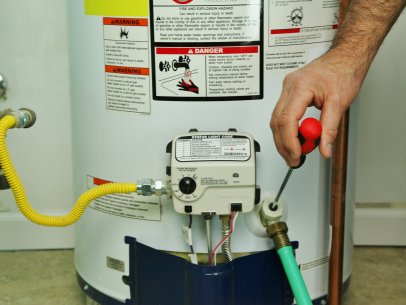What're your ideas with regards to Tips For Maintaining Your Hot Water Heater?

Hot water is crucial for everyday comfort, whether it's for a revitalizing shower or washing meals. To ensure your warm water system runs effectively and lasts longer, normal maintenance is crucial. This post gives sensible ideas and understandings on exactly how to maintain your home's warm water system to avoid disturbances and expensive fixings.
Introduction
Keeping your home's hot water system could seem challenging, yet with a few simple actions, you can ensure it runs smoothly for several years ahead. This guide covers everything from comprehending your warm water system to DIY upkeep suggestions and recognizing when to contact expert help.
Value of Keeping Your Hot Water System
Normal maintenance not just extends the life expectancy of your hot water system however additionally ensures it runs efficiently. Ignoring maintenance can result in reduced performance, higher power bills, and even early failure of the system.
Indications Your Warm Water System Needs Upkeep
Recognizing when your hot water system requires focus can avoid significant problems. Look out for indications such as irregular water temperature level, strange noises from the heating system, or rusty water.
Understanding Your Hot Water System
Prior to diving right into maintenance tasks, it's valuable to recognize the basic components of your warm water system. Commonly, this includes the water heater itself, pipelines, anode poles, and temperature controls.
Monthly Upkeep Tasks
Normal month-to-month checks can help catch small concerns prior to they escalate.
Flushing the Water Heater
Purging your hot water heater removes sediment accumulation, enhancing performance and lengthening its life.
Monitoring and Changing Anode Rods
Anode poles prevent corrosion inside the tank. Examining and changing them when broken is critical.
Evaluating and Readjusting Temperature Level Settings
Adjusting the temperature settings guarantees ideal efficiency and security.
DIY Tips for Maintenance
You can perform numerous upkeep jobs yourself to keep your warm water system in leading condition.
Checking for Leaks
Routinely inspect pipes and connections for leakages, as these can cause water damages and greater expenses.
Checking Stress Alleviation Valves
Checking the stress safety valve guarantees it works properly and stops extreme pressure buildup.
Insulating Pipes
Insulating warm water pipelines lowers warmth loss and can conserve energy.
When to Call an Expert
While DIY maintenance is advantageous, some issues require professional proficiency.
Complex Concerns Calling For Specialist Assistance
Examples include significant leakages, electrical problems, or if your hot water heater is regularly underperforming.
Regular Expert Maintenance Perks
Professional upkeep can include comprehensive assessments, tune-ups, and making sure compliance with safety standards.
Conclusion
Normal upkeep of your home's hot water system is important for efficiency, longevity, and price financial savings. By adhering to these suggestions and knowing when to look for specialist assistance, you can ensure a trustworthy supply of hot water without unanticipated interruptions.
How to Maintain an Instant Hot Water Heater
Before tinkering with your hot water heater, make sure that it’s not powered on. You also have to turn off the main circuit breaker and shut off the main gas line to prevent accidents. Also turn off the water valves connected to your unit to prevent water from flowing into and out of the appliance. 2. When you’re done, you have to detach the purge valves’ caps. These look like the letter “T†and are situated on either side of the water valves. Doing so will release any pressure that has accumulated inside the valves while at the same time avoid hot water from shooting out and burning your skin. 3. When the purge valves’ caps are removed, you have to connect your hosing lines to the valves. Your unit should have come with three hoses but if it didn’t, you can purchase these things from any hardware or home repair shops. You can also get them from retail stores that sell water heating systems. Read the user’s manual and follow it to complete this task properly. When the hosing lines are connected, open the purge port’s valves. 4. You should never use harsh chemical cleaners or solutions when cleaning your unit. Make use of white vinegar instead. It should be undiluted and you’ll probably use about 2 gallons. 5. Now flush your water heater. This task should probably take about 40 minutes. We can’t give you specific directions for this because the procedure is carried out depending on the type, model and brand of your heater. With that being said, refer to the user’s manual. 6. When you’re done draining the unit, you have to turn off the purge port valves again. Remove the hosing lines that you earlier installed on each of the water valves. Put the valve caps (purge port) back in their respective places and be very careful so as not to damage the rubber discs that are found inside these caps. 7. Now that everything’s back in place, check your user’s manual again to find out how to reactivate your water heating system. 8. Once it is working, turn one of your hot water faucets on just to let air pass through the heater’s water supply pipes. Leave the tap on until water flows smoothly out of it. https://www.orrplumbing.com/blog/2014/september/how-to-maintain-an-instant-hot-water-heater/

We had been brought to that write-up on How to Maintain a Hot Water Heater in a Few Simple Steps through a good friend on another web page. Loved our piece of writing? Please share it. Let somebody else find it. I truly appreciate your readership.
Call Today